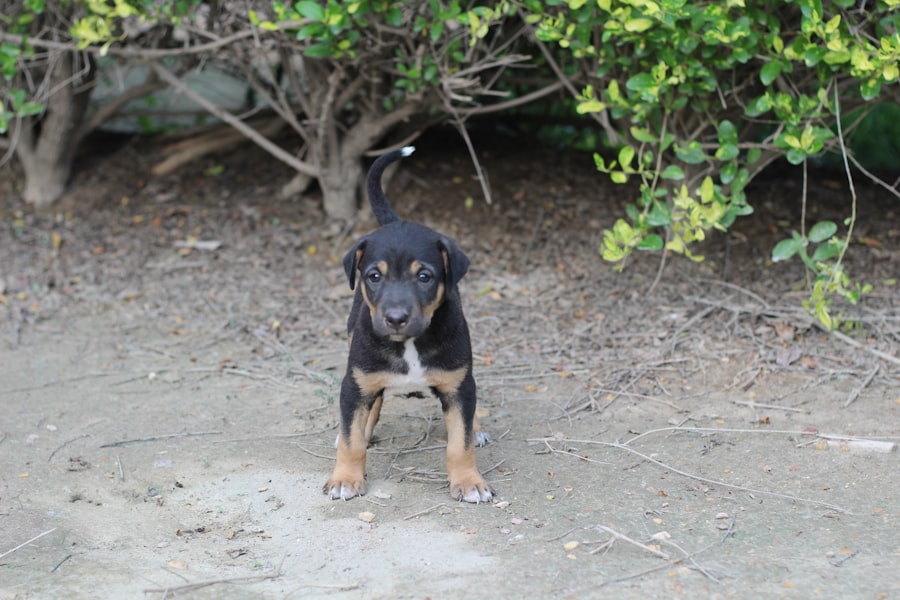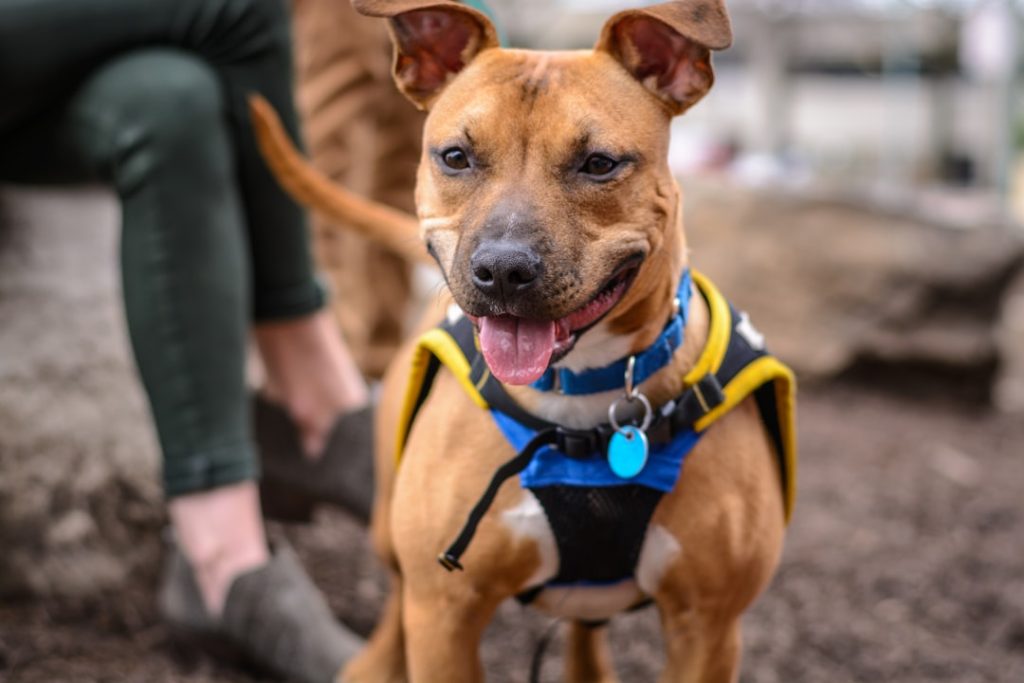Understanding the root cause of aggressive behavior in dogs is essential for effective management and resolution. Aggression can arise from various factors, including fear, territoriality, possessiveness, or physical discomfort. To address the issue properly, it is crucial to identify and analyze the specific triggers that lead to aggressive responses.
For instance, a dog may exhibit aggression when approached during meals, indicating possessive behavior. Alternatively, aggression towards unfamiliar people or animals may suggest fear or territorial instincts. By pinpointing the underlying cause, pet owners can implement appropriate strategies to address and prevent future aggressive incidents.
When investigating the root of aggressive behavior, it is important to consider both the breed characteristics and individual temperament of the dog. While certain breeds may have genetic predispositions towards specific behaviors, it is crucial to recognize that aggression is not solely determined by breed. Each dog possesses a unique personality shaped by its experiences and environment.
Taking into account both breed tendencies and individual traits allows pet owners to develop a more comprehensive understanding of the problem and tailor their approach accordingly to address the aggressive behavior effectively.
Table of Contents
- 1 Proper training and socialization
- 2 Secure fencing and containment
- 3 Supervision and monitoring
- 4 Positive reinforcement and redirection
- 5 Seeking professional help
- 6 Creating a safe and harmonious environment
- 7 FAQs
- 7.1 What are some reasons why a dog might attack chickens?
- 7.2 How can I prevent my dog from attacking chickens?
- 7.3 What are some training techniques to prevent a dog from attacking chickens?
- 7.4 Should I keep my dog on a leash around chickens?
- 7.5 What should I do if my dog has already attacked chickens?
Key Takeaways
- Understanding the root of the problem is crucial in addressing behavioral issues in dogs, as it allows for targeted and effective solutions.
- Proper training and socialization from an early age can help prevent aggression and fear-based behaviors in dogs, leading to a well-adjusted and balanced pet.
- Secure fencing and containment are essential for preventing escape and potential harm to the dog and others, as well as for maintaining a safe environment.
- Supervision and monitoring of the dog’s behavior and interactions with others can help identify and address any concerning patterns or issues early on.
- Positive reinforcement and redirection techniques can be used to encourage desirable behaviors and discourage negative ones, promoting a harmonious relationship between the dog and its environment.
- Seeking professional help from a qualified trainer or behaviorist can provide valuable guidance and support in addressing complex behavioral issues in dogs.
- Creating a safe and harmonious environment for the dog involves a combination of understanding, training, containment, supervision, positive reinforcement, and professional assistance.
Establishing Boundaries and Good Behavior
Training should begin at an early age to establish boundaries and teach appropriate behavior. Basic obedience training, such as sit, stay, and come commands, can help establish a foundation for good behavior and create a strong bond between the dog and its owner.
Socialization is also crucial in helping dogs become well-adjusted and comfortable in various environments and around different people and animals. Exposing dogs to a variety of experiences, such as different sounds, sights, and smells, can help reduce fear and anxiety, which are common triggers for aggression.
Consistent Leadership and Clear Communication
In addition to basic obedience training and socialization, it’s important for pet owners to provide consistent leadership and clear communication with their dogs. Dogs thrive in environments where they understand their role within the family hierarchy and know what is expected of them. Consistent training and clear communication can help prevent confusion and frustration, which can lead to aggressive behavior. By providing proper training and socialization, pet owners can help their dogs develop into well-behaved and confident companions.
Secure fencing and containment

Secure fencing and containment are crucial for preventing aggressive behavior in dogs, especially for those with a tendency to be territorial or reactive towards other animals or people. A secure fence can help prevent dogs from escaping the property and getting into potentially dangerous situations where they may exhibit aggressive behavior. Additionally, a secure fence can also prevent other animals or people from entering the property and provoking a defensive or territorial response from the dog.
It’s important for pet owners to regularly inspect their fencing to ensure there are no weak spots or areas where the dog could escape or where intruders could enter. Additionally, it’s important to consider the height of the fence and any potential gaps or openings that could allow the dog to escape or be approached by strangers. In some cases, pet owners may need to invest in additional containment measures, such as secure kennels or runs, to provide a safe and controlled environment for their dogs.
By ensuring secure fencing and containment, pet owners can help prevent situations that may trigger aggressive behavior in their dogs.
Supervision and monitoring
Supervision and monitoring are key components in preventing aggressive behavior in dogs, especially when they are interacting with other animals or people. It’s important for pet owners to closely supervise their dogs when they are in situations where they may encounter potential triggers for aggression. This includes monitoring interactions with other animals, such as at dog parks or on walks, as well as interactions with unfamiliar people who may approach the dog.
In addition to supervision, it’s important for pet owners to be aware of their dog’s body language and behavior cues that may indicate potential aggression. Signs of aggression in dogs can include growling, baring teeth, stiff body posture, raised hackles, and intense staring. By being attentive to these cues, pet owners can intervene before a situation escalates and prevent potential aggressive incidents.
Regular monitoring of the dog’s behavior and interactions can also help pet owners identify any patterns or triggers for aggression, which can then be addressed through training and management strategies.
Positive reinforcement and redirection
Positive reinforcement and redirection are effective tools in addressing aggressive behavior in dogs. Positive reinforcement involves rewarding desired behaviors with treats, praise, or toys to encourage the dog to repeat those behaviors. This can be particularly effective in teaching dogs alternative behaviors to replace aggressive responses.
For example, if a dog tends to lunge or bark aggressively at other dogs on walks, pet owners can use positive reinforcement to reward calm and non-reactive behavior when encountering other dogs. Redirection involves redirecting the dog’s attention away from potential triggers for aggression towards more appropriate activities or behaviors. For example, if a dog becomes possessive over its food bowl, pet owners can redirect the dog’s attention by asking it to perform a simple obedience command before allowing it to eat.
This helps shift the focus away from possessive behavior towards obedience and cooperation. By using positive reinforcement and redirection techniques, pet owners can help their dogs learn alternative behaviors that are more desirable and reduce the likelihood of aggressive responses.
Seeking professional help

Expert Guidance and Support
Seeking professional help is crucial for pet owners dealing with aggressive behavior in their dogs. Professional trainers or behaviorists can provide valuable insight and guidance in addressing the root causes of aggression and developing effective management and training strategies. They can also help pet owners understand their dog’s body language and behavior cues, as well as provide support in implementing positive reinforcement and redirection techniques.
Ruling Out Underlying Medical Issues
In some cases, seeking professional help may also involve consulting with a veterinarian to rule out any underlying medical issues that could be contributing to the aggressive behavior. Pain or discomfort can sometimes lead to reactive or aggressive responses in dogs, so it’s essential to ensure that any potential medical issues are addressed as part of the overall management plan for aggression.
Access to Expert Knowledge and Support
By seeking professional help, pet owners can gain access to expert knowledge and support that can help them effectively address their dog’s aggressive behavior. With the right guidance and support, pet owners can develop a comprehensive plan to manage and overcome their dog’s aggression, leading to a safer and more harmonious living environment for both the dog and its human family.
Creating a safe and harmonious environment
Creating a safe and harmonious environment is essential for preventing aggressive behavior in dogs. This includes providing a secure and comfortable living space for the dog, as well as establishing clear rules and boundaries within the household. It’s important for pet owners to create a predictable routine for their dogs that includes regular exercise, mental stimulation, and opportunities for social interaction.
Additionally, creating a harmonious environment involves managing potential triggers for aggression and setting up the dog for success in various situations. For example, if a dog becomes anxious or reactive around unfamiliar people, pet owners can manage these situations by providing a quiet space for the dog to retreat to when guests visit, as well as using positive reinforcement techniques to help the dog feel more comfortable around strangers. By creating a safe and harmonious environment, pet owners can help reduce stress and anxiety in their dogs, which can in turn help prevent aggressive behavior.
In conclusion, addressing aggressive behavior in dogs requires a multifaceted approach that takes into account the root causes of aggression, proper training and socialization, secure fencing and containment, supervision and monitoring, positive reinforcement and redirection, seeking professional help, and creating a safe and harmonious environment. By implementing these strategies, pet owners can effectively address their dog’s aggressive behavior and create a safe and happy environment for both their dog and those around them.
If you’re looking for ways to keep your dog from attacking chickens, you may also be interested in learning about whether guinea fowl can live with chickens. Check out this article to find out more about integrating different types of poultry on your property.
FAQs
What are some reasons why a dog might attack chickens?
Some reasons why a dog might attack chickens include natural predatory instincts, lack of proper training and socialization, boredom, or a lack of supervision.
How can I prevent my dog from attacking chickens?
To prevent your dog from attacking chickens, you can provide proper training and socialization, supervise your dog around chickens, provide enough mental and physical stimulation, and use positive reinforcement to teach your dog to leave the chickens alone.
What are some training techniques to prevent a dog from attacking chickens?
Training techniques to prevent a dog from attacking chickens include desensitization and counter-conditioning, using positive reinforcement, teaching a strong “leave it” or “drop it” command, and providing plenty of exercise and mental stimulation for the dog.
Should I keep my dog on a leash around chickens?
It is recommended to keep your dog on a leash when around chickens, especially if the dog has not been properly trained to leave the chickens alone. This allows for better control and supervision.
What should I do if my dog has already attacked chickens?
If your dog has already attacked chickens, it is important to address the behavior immediately. Seek professional help from a dog trainer or behaviorist, and take steps to prevent future incidents, such as keeping the dog away from the chickens and providing proper training.
Meet Walter, the feathered-friend fanatic of Florida! Nestled in the sunshine state, Walter struts through life with his feathered companions, clucking his way to happiness. With a coop that’s fancier than a five-star hotel, he’s the Don Juan of the chicken world. When he’s not teaching his hens to do the cha-cha, you’ll find him in a heated debate with his prized rooster, Sir Clucks-a-Lot. Walter’s poultry passion is no yolk; he’s the sunny-side-up guy you never knew you needed in your flock of friends!







